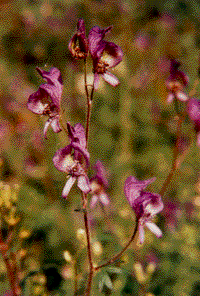Driftless Area National Wildlife Refuge facts for kids
Quick facts for kids National Wildlife Refuge System |
|
|---|---|
|
IUCN Category IV (Habitat/Species Management Area)
|
|

Driftless Area National Wildlife Refuge units
|
|
| Location | United States |
| Nearest city | Dubuque, Iowa |
| Area | 811.99 acres (328.60 ha) |
| Established | 1989 |
| Governing body | U.S. Fish and Wildlife Service |
| Website | Driftless Area National Wildlife Refuge |
The Driftless Area National Wildlife Refuge is a special place in parts of Iowa, Wisconsin, and Illinois. It's not one big area, but many smaller pieces of land. These pieces are near the Upper Mississippi River National Wildlife and Fish Refuge.
This refuge was created in 1989 to help two very rare species. One is the endangered Iowa Pleistocene Snail. The other is the threatened plant called Northern Wild Monkshood. Even though the refuge focuses on these two, it helps protect many other rare plants and animals too. The U.S. Fish and Wildlife Service looks after this refuge. Today, the refuge has nine sites in Iowa. These sites cover about 812 acres (329 hectares). They are found in Clayton, Dubuque, Jackson, and Allamakee counties.
Contents
Cool Geology: The Driftless Area
Parts of Iowa, Wisconsin, Minnesota, and Illinois have unusual landforms. This area is called the "Driftless Area". It's special because the last glaciers did not cover it. This means the old bedrock, formed long ago, was shaped by water and wind instead of ice.
This area has steep slopes and cliffs. It also has unique habitats called algific talus slopes. These are rocky slopes, often facing north, where cold air comes out from cracks underground. This cold air keeps the slopes cool all year. Even on a hot summer day, these slopes stay between 42°F (6°C) and 55°F (13°C). These cool spots are perfect homes for rare plants and animals.
How Algific Talus Slopes Stay Cold
In summer, air goes down into sinkholes (holes in the ground). It flows over very cold underground water. Then, this chilled air comes out through vents on the slopes. This keeps the slopes cool even when it's hot outside.
In winter, air goes into the vents, and the groundwater freezes. Because of these cool, moist conditions, unusual plants grow here. These plants usually grow in much colder, northern climates. Examples include yews, balsam fir, Showy lady's slipper, and golden saxifrage. These cold spots allow these rare species to survive.
The Tiny Iowa Pleistocene Snail
The Iowa Pleistocene Snail is a very small land snail. It's smaller than a shirt button, only about 5 millimeters (1/4 inch) wide. This snail is a "glacial relict species." This means it survived from the Ice Age in these small, cool areas. It needs just the right temperature, moisture, and food to live.
For a long time, people only knew this snail from fossils. They thought it was extinct. But in 1955, a scientist found it alive in Iowa. It was living in leaf litter, eating birch and maple leaves. Because its home is so fragile and there are so few of them, this snail is on the federal endangered species list. Protecting its remaining homes is the main way to help it survive. There are 36 known groups of these snails in northeast Iowa and one in northwest Illinois.
The Rare Northern Wild Monkshood
The Northern Wild Monkshood is a threatened plant. It belongs to the buttercup family. This plant grows on 114 algific talus slopes and similar cool, moist places. Most of these spots are in Iowa. You can also find it in Wisconsin, Ohio, and New York.
The flower is purple and shaped like a hood. This shape helps bumble bees pollinate it. This plant was listed as threatened in 1978. Protecting its habitat is important for its recovery, just like for the snail.
Protecting These Special Habitats
There are over 300 algific talus slopes, but some are not in good condition. Anything that stops the air flow through the sinkholes and out the vents can harm the habitat. In the past, activities like logging, grazing animals, building roads, and filling sinkholes damaged these areas.
Today, these habitats are still threatened by logging, grazing, and farming runoff. Also, invasive species like garlic mustard can take over.
Refuge Efforts and Locations
The Driftless Area National Wildlife Refuge has scattered pieces of land in northeast Iowa. These range from a few acres to hundreds of acres. The refuge buys land from willing sellers to expand. They also work to restore forests or prairies around the algific talus slopes. This helps many animals like white-tailed deer, wild turkeys, bald eagles, and different songbirds.
States, counties, and groups like The Nature Conservancy also help protect these slopes. Private landowners are very important in protecting these habitats. The Fish and Wildlife Service talks to landowners who have these special areas. They offer help to manage and protect them.
The Refuge is managed from McGregor, Iowa. You can arrange tours from there. Fishing and White-tailed deer hunting are allowed in a few small parts of the refuge.
Images for kids







